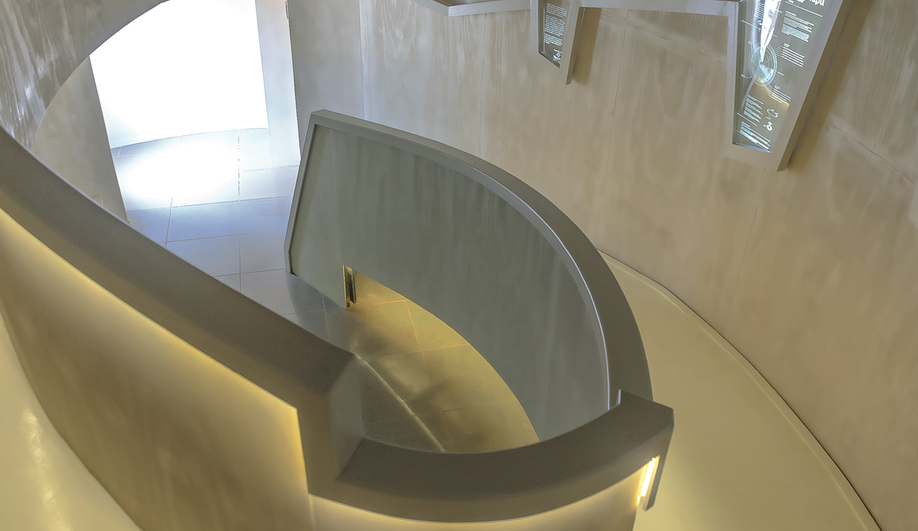
To make sense of a bitter and complicated history in a remote region of Chile, local architect Susana Herrera’s Yepun Astronomical Observatory directs the eye toward the skies.
“Architecture is not an end; it’s a means by which we can ask questions,” says Susana Herrera. The Chilean architect is explaining the intellectual framework for the Yepun Astronomical Observatory, a tower for stargazing in Arauco province in the country’s south. As Herrera talks, she sweeps an arm in the direction of the forested hills that surround this new addition to the Quelén Centro Turístico, an evolving hotel project that her firm, Factoría, has been involved with for nearly 15 years. The question she was asking here was not about the heavenly bodies above, but about how to bring together the Indigenous Mapuche and settler populations in the region.
“There was no way I could do this project without acknowledging and incorporating the Mapuche culture, wisdom and view of the universe,” she explains.

Herrera’s Concepción-based studio favours collaboration with clients and with local communities, and it gets involved in projects on a granular level. On the weekend that we visit Nahuelbuta, we set out from an industrial port area in Coronel, where Herrera and a few other architects have just completed a three-day workshop in the making of cross-laminated timber. In this region, the main resource is wood, primarily for pulp and paper exports. Along the highway, quick-growing pine and eucalyptus planted by multinationals have largely replaced the native forest. “Despite all these big companies, Arauco province remains one of the poorest in the country,” she says.
Forestry in Nahuelbuta remains a primary cause of unrest. But the friction goes back more than two centuries, when the area was referred to as the “ultima frontera” (the last frontier) because of its resilient resistance to Spanish colonial forces and, after 1810, to the new national government.
Almost 15 years ago, when Pedro Durán, the owner of the Quelén Centro Turístico, commissioned Herrera to redesign the country house that would become the beginning of the growing hotel, Herrera was shocked to see the state still deploying the military, ostensibly to protect the pulp industry from insurgents.
“I couldn’t believe it,” she says. “There were tanks and armoured vehicles patrolling the area. It was as if I’d been thrown back to the time of the Pinochet dictatorship. That’s when I realized I had to be part of creating positive change, creating a rapprochement between Indigenous and non-Indigenous people while promoting sustainable economic opportunities.” She nudged Durán to develop not just the hotel but also other activity centres – including the new observatory – offering employment and skills development.
The observatory rises from an elliptical footprint inserted into a steep hillside that cascades down to the shore of Lanalhue Lake. A zigzagging wooden deck, which serves as a public plaza, connects the tower to the reception building and an event space that form part of the Quelén Centro Turístico. As we enter the private sphere of the observatory, Herrera tells me it used to house the reception desk for the hotel.

“It was destroyed in the 2010 earthquake,” she says of the room, “but we decided to repurpose the structural framework.” Unlike the former building’s glazed skin, the Oregon pine pillars managed to withstand the magnitude 8.8 quake, which destroyed most of the hotel as well as many buildings in the region. She has inserted a ramp, rather than stairs, to lead to the telescope at the top of the tower. “A ramp offers a slow, smooth transition; it provides time to reflect,” she explains as we start our own slow ascent past images of constellations with their names written in both Spanish and Mapudungun.
“In the end, it’s such a simple structure that when you travel through it, you can disconnect from the outside world,” says Herrera. “It’s not that it is the most avant-garde in terms of form – it isn’t. But it responds to the culture of this area, the traditional crafts and woodworking.” This adherence to specificity of place stands in contrast to the large metallic observatories in Chile’s arid north, where the telescopes aim to reveal clues to the beginning of the universe.
“The role of the observatory is to put time into perspective,” Herrera says. “It is a way to transcend time – it lets us see that human presence is merely a fraction in the time of the universe. Colonization and conflict go back 200 years; the Nahuelbuta range is 580 million years old. The observatory represents a meeting of worlds that can seem very far apart but that nonetheless share a specific place on this planet. In the cosmos, we all share a common space.”
This story was taken from the October 2017 issue of Azure. Buy a copy right here, or subscribe to the magazine here.
